Louis Rémy Mignot (American, 1831-1870) Incense Breathing Morn. - Gray's Elegy (On the Guayaquil River) Signed with artist's initial and dated 'M.|68' bottom right; also with London preparer's stencil verso and titled on label verso, oil on canvas 16 x 22 in. (40.6 x 55.9cm) provenance: Private Collection, United Kingdom. By descent in the family. Private Collection, Rome, Italy. LITERATURE: Katherine E. Manthorne and John W. Coffey, The Landscapes of Louis Rémy Mignot: A Southern Painter Abroad, Washington, D.C., 1996, Appendix, "Catalogue of 1868 Sale," no. 43, p. 220 and (possibly) "Catalogue of the 1876 Memorial Exhibition," no. 46, p. 220 (not illustrated). NOTE: Long overshadowed by his fellow contemporaries of the Hudson River School, Louis Rémy Mignot now stands as one of the most skilled landscapists of his generation, a young talent who gained fame by infusing serenity and sensitivity into his beautifully rendered tropical views. The son of French Catholics who fled to the United States in order to escape the 1830 French Revolution, Mignot was born and raised in Charleston, South Carolina. At seventeen, after the passing of his father who had never approved of his career choice, he departed for the Netherlands, and trained under famed landscapist Andreas Schelfout. He later returned to the United States and settled in New York, where he joined the competitive circle of the Hudson River School painters. There, Mignot was quickly recognized as a promising figure and became close friends with Eastman Johnson and Frederic Edwin Church who deeply encouraged him and with whom he shared a taste for travels and expeditions. Mignot's career took a decisive turn in 1857, when he embarked on a five-month journey to Central and South America with Church. From May to September, the artists explored exotic landscapes, recorded the local flora, met with the inhabitants, and captured tropical subjects with astonishing detail. While Church had already been to the Andes, Mignot was discovering the region for the first time and became so obsessed with certain motifs and images that he continued painting similar scenes until his death in the United Kingdom in 1870. As Katharine Munford explains: "South America offered Mignot a spiritual haven. From the time he set foot on the soil of Ecuador, he painted its contours more than any other single theme." After crossing Panama, Mignot arrived in Ecuador and started his journey in Guayaquil, the second largest city in the country, two hundred miles south of Quito. Instead of staying in town, the artist chose to explore the interior of the continent by boat-then the most dependable means of transportation. Among all the landscapes that he discovered in Ecuador, the Guayas River became Mignot's most important source of inspiration. Unlike the rest of the continent, which was said to be dry and inhospitable, the region was famous for its lush vegetation, steamy weather and rich fauna, which may have reminded Mignot of his native South Carolina. With its painterly touch, blurred edges and softened hues, Incense Morn. Gray's Elegy is typical of the late South American pictures which Mignot completed in Britain, about ten years after his first trip to Ecuador. In comparison to Frederic Church's sharply delineated compositions, Mignot's painting tends to be less detailed and more evocative of the artist's melancholic feeling, thus resembling a study of tone and mood. Here, the artist depicts a quiet morning scene along the tropical river. Each bank is marked by an abundant, tangled, vegetation which conveys a sense of wildness to the entire scene. The willowy palm trees, surrounding flowers and verdant bushes seem to grow to infinity, expanding beyond the limits of the composition. The only human presence is a figure on the right, who calmly navigates his balsa on the calm waters while an exotic bird, probably a parrot, is shown nose diving. As opposed to Mignot's earlier compositions, in which a g
Louis Rémy Mignot (American, 1831-1870) Incense Breathing Morn. - Gray's Elegy (On the Guayaquil River) Signed with artist's initial and dated 'M.|68' bottom right; also with London preparer's stencil verso and titled on label verso, oil on canvas 16 x 22 in. (40.6 x 55.9cm) provenance: Private Collection, United Kingdom. By descent in the family. Private Collection, Rome, Italy. LITERATURE: Katherine E. Manthorne and John W. Coffey, The Landscapes of Louis Rémy Mignot: A Southern Painter Abroad, Washington, D.C., 1996, Appendix, "Catalogue of 1868 Sale," no. 43, p. 220 and (possibly) "Catalogue of the 1876 Memorial Exhibition," no. 46, p. 220 (not illustrated). NOTE: Long overshadowed by his fellow contemporaries of the Hudson River School, Louis Rémy Mignot now stands as one of the most skilled landscapists of his generation, a young talent who gained fame by infusing serenity and sensitivity into his beautifully rendered tropical views. The son of French Catholics who fled to the United States in order to escape the 1830 French Revolution, Mignot was born and raised in Charleston, South Carolina. At seventeen, after the passing of his father who had never approved of his career choice, he departed for the Netherlands, and trained under famed landscapist Andreas Schelfout. He later returned to the United States and settled in New York, where he joined the competitive circle of the Hudson River School painters. There, Mignot was quickly recognized as a promising figure and became close friends with Eastman Johnson and Frederic Edwin Church who deeply encouraged him and with whom he shared a taste for travels and expeditions. Mignot's career took a decisive turn in 1857, when he embarked on a five-month journey to Central and South America with Church. From May to September, the artists explored exotic landscapes, recorded the local flora, met with the inhabitants, and captured tropical subjects with astonishing detail. While Church had already been to the Andes, Mignot was discovering the region for the first time and became so obsessed with certain motifs and images that he continued painting similar scenes until his death in the United Kingdom in 1870. As Katharine Munford explains: "South America offered Mignot a spiritual haven. From the time he set foot on the soil of Ecuador, he painted its contours more than any other single theme." After crossing Panama, Mignot arrived in Ecuador and started his journey in Guayaquil, the second largest city in the country, two hundred miles south of Quito. Instead of staying in town, the artist chose to explore the interior of the continent by boat-then the most dependable means of transportation. Among all the landscapes that he discovered in Ecuador, the Guayas River became Mignot's most important source of inspiration. Unlike the rest of the continent, which was said to be dry and inhospitable, the region was famous for its lush vegetation, steamy weather and rich fauna, which may have reminded Mignot of his native South Carolina. With its painterly touch, blurred edges and softened hues, Incense Morn. Gray's Elegy is typical of the late South American pictures which Mignot completed in Britain, about ten years after his first trip to Ecuador. In comparison to Frederic Church's sharply delineated compositions, Mignot's painting tends to be less detailed and more evocative of the artist's melancholic feeling, thus resembling a study of tone and mood. Here, the artist depicts a quiet morning scene along the tropical river. Each bank is marked by an abundant, tangled, vegetation which conveys a sense of wildness to the entire scene. The willowy palm trees, surrounding flowers and verdant bushes seem to grow to infinity, expanding beyond the limits of the composition. The only human presence is a figure on the right, who calmly navigates his balsa on the calm waters while an exotic bird, probably a parrot, is shown nose diving. As opposed to Mignot's earlier compositions, in which a g
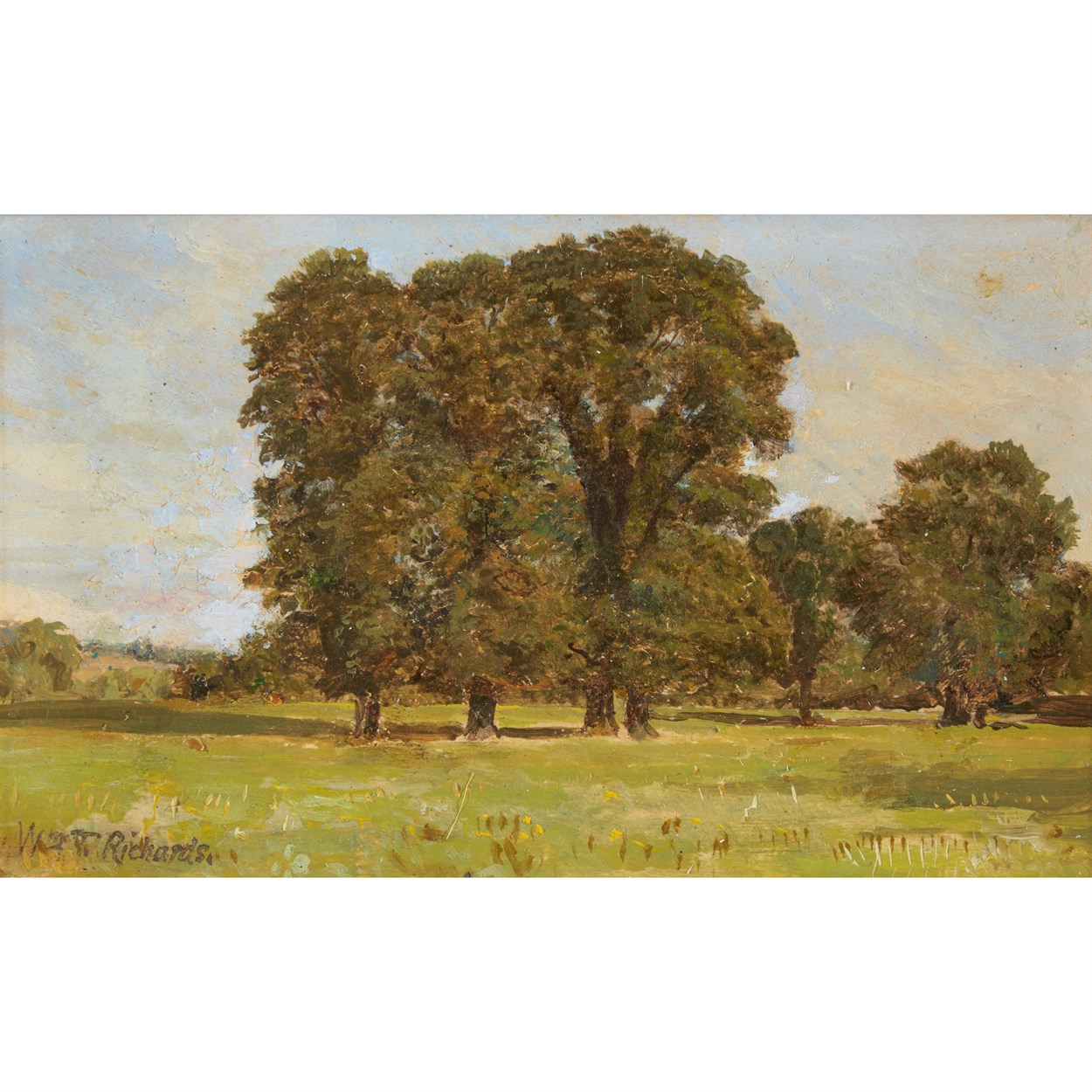
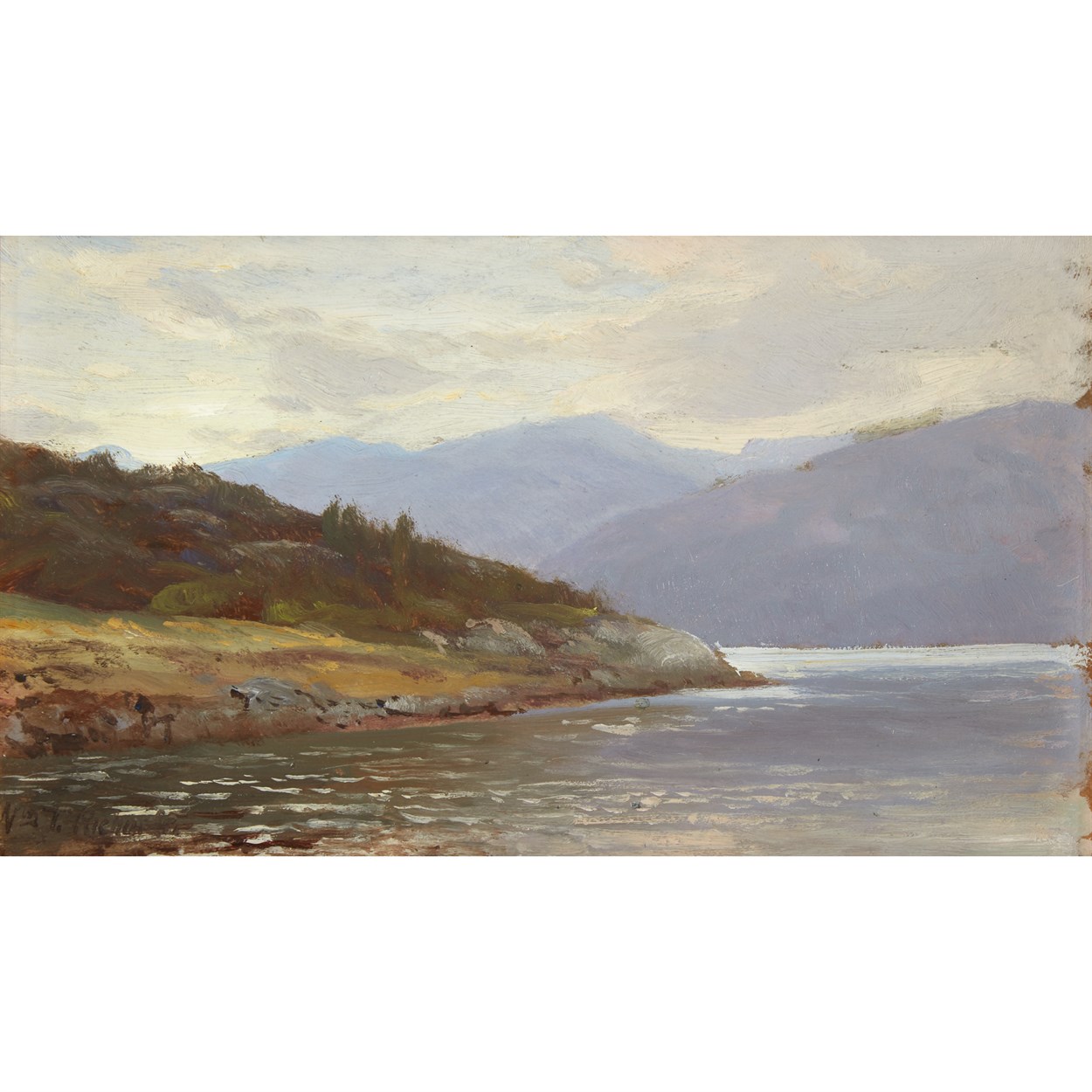


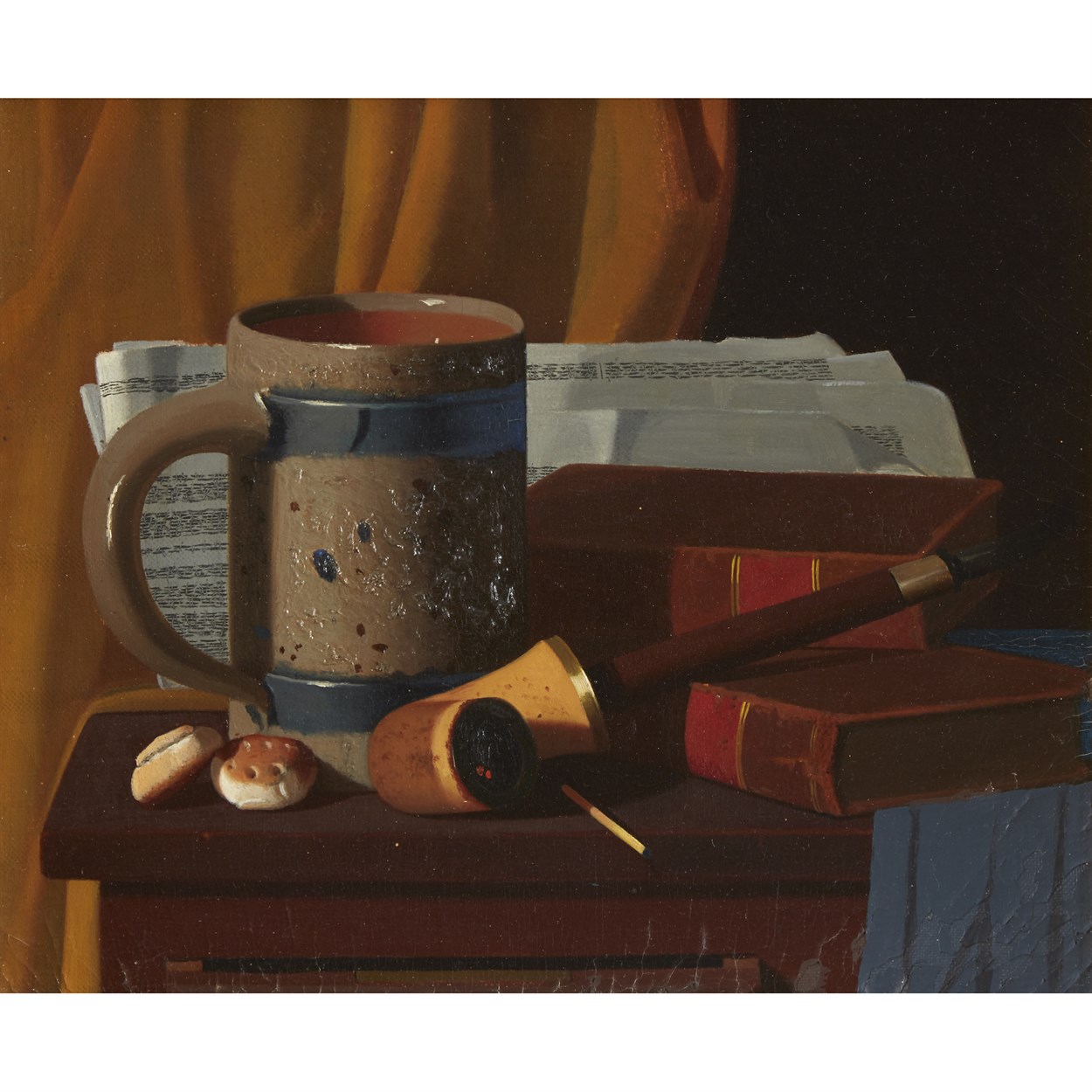
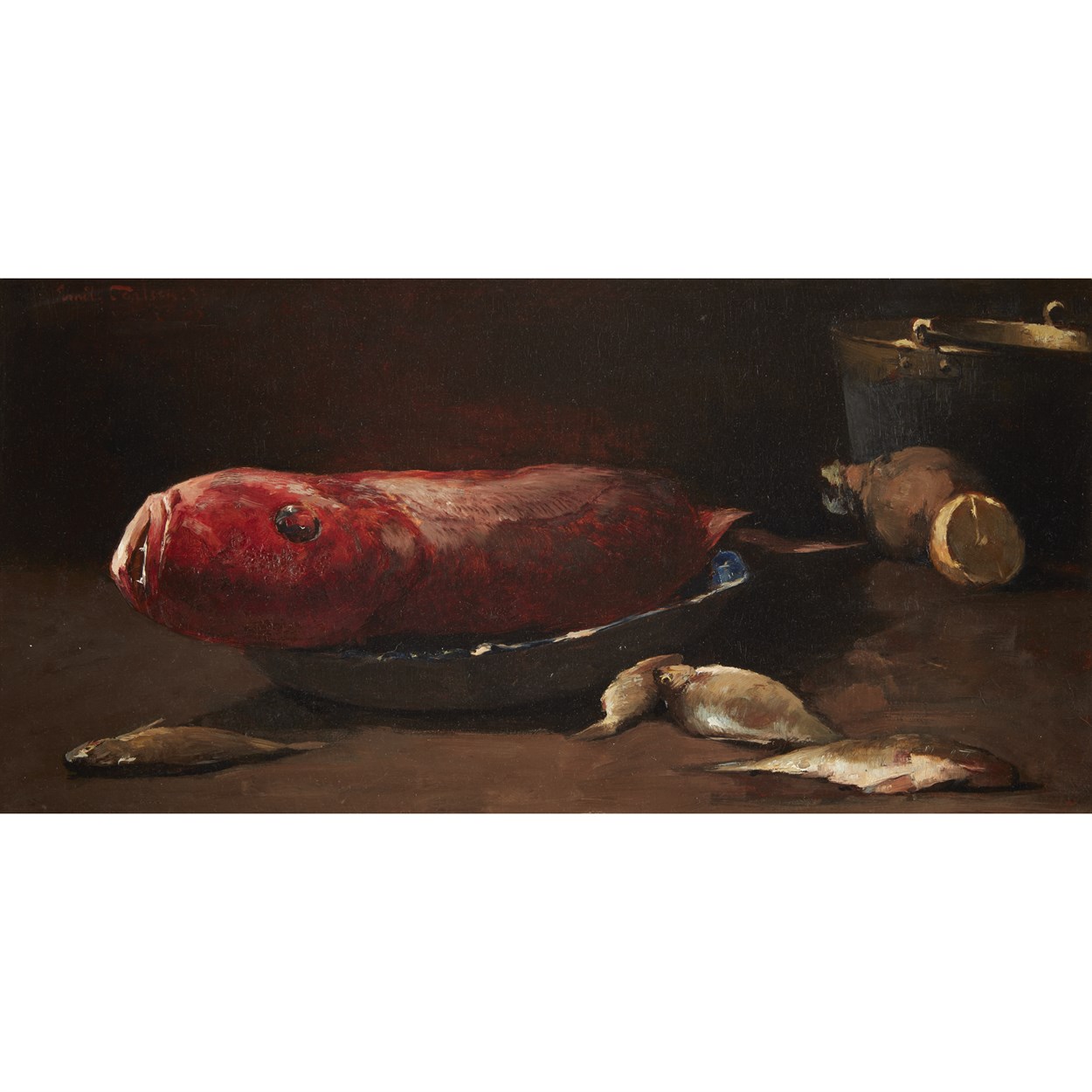
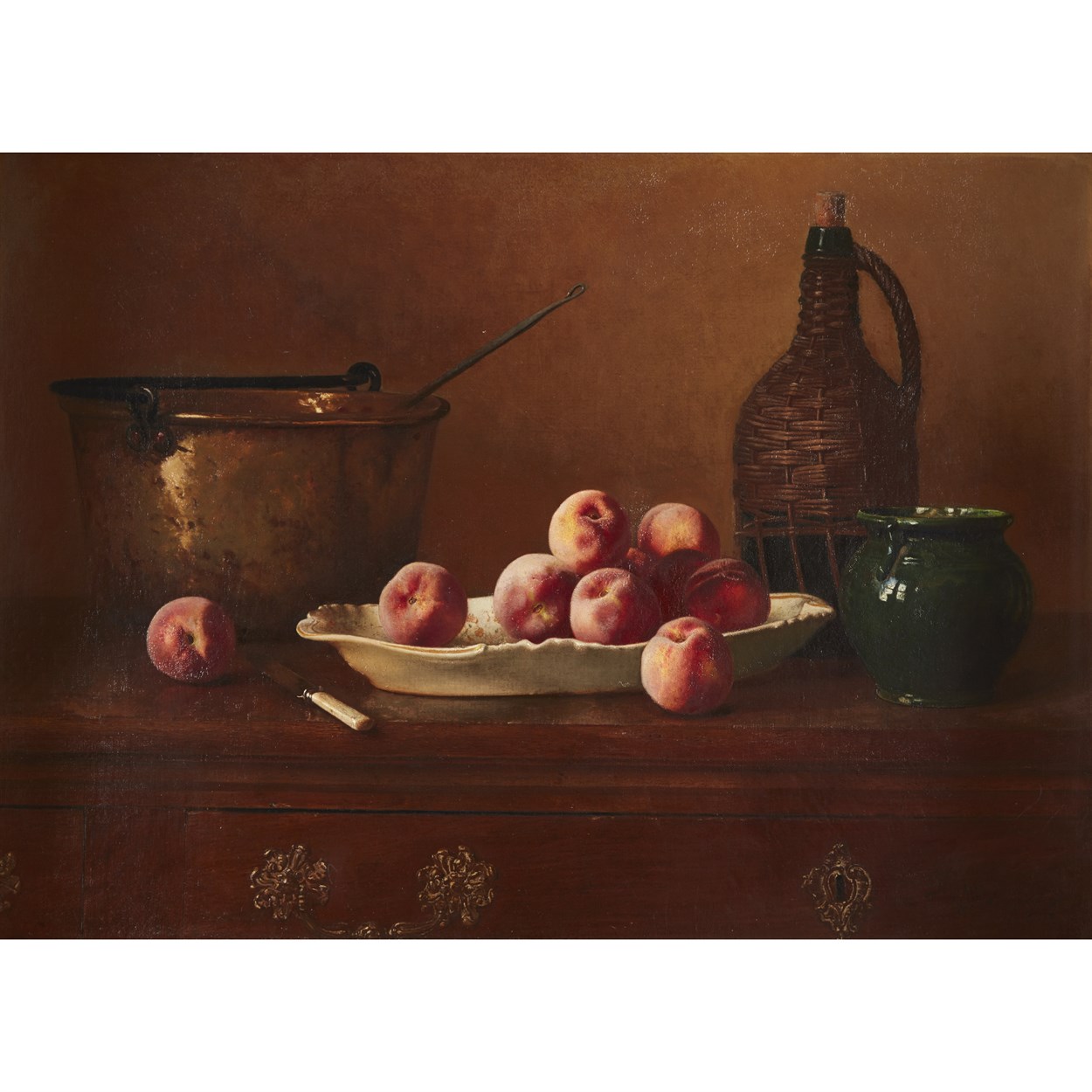
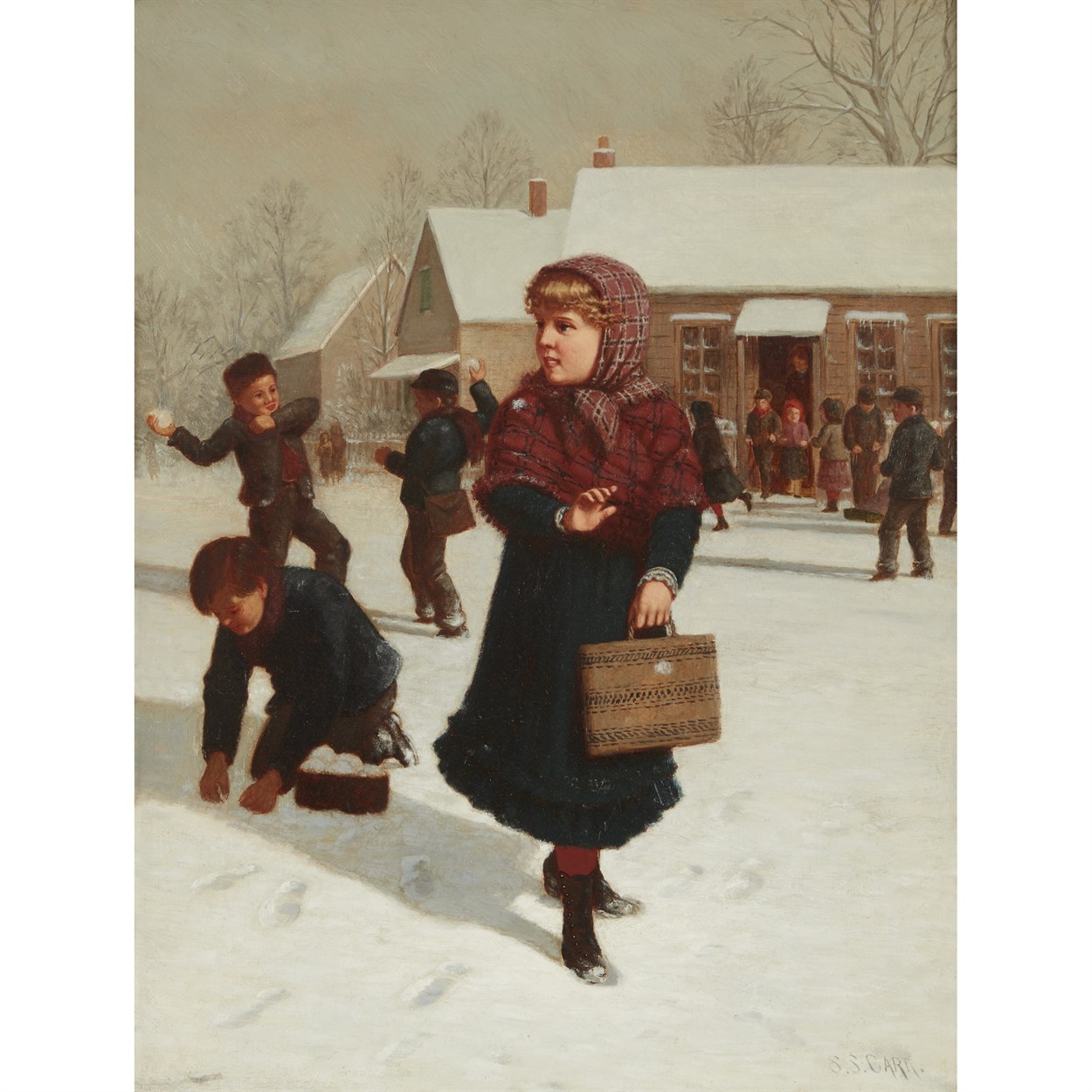


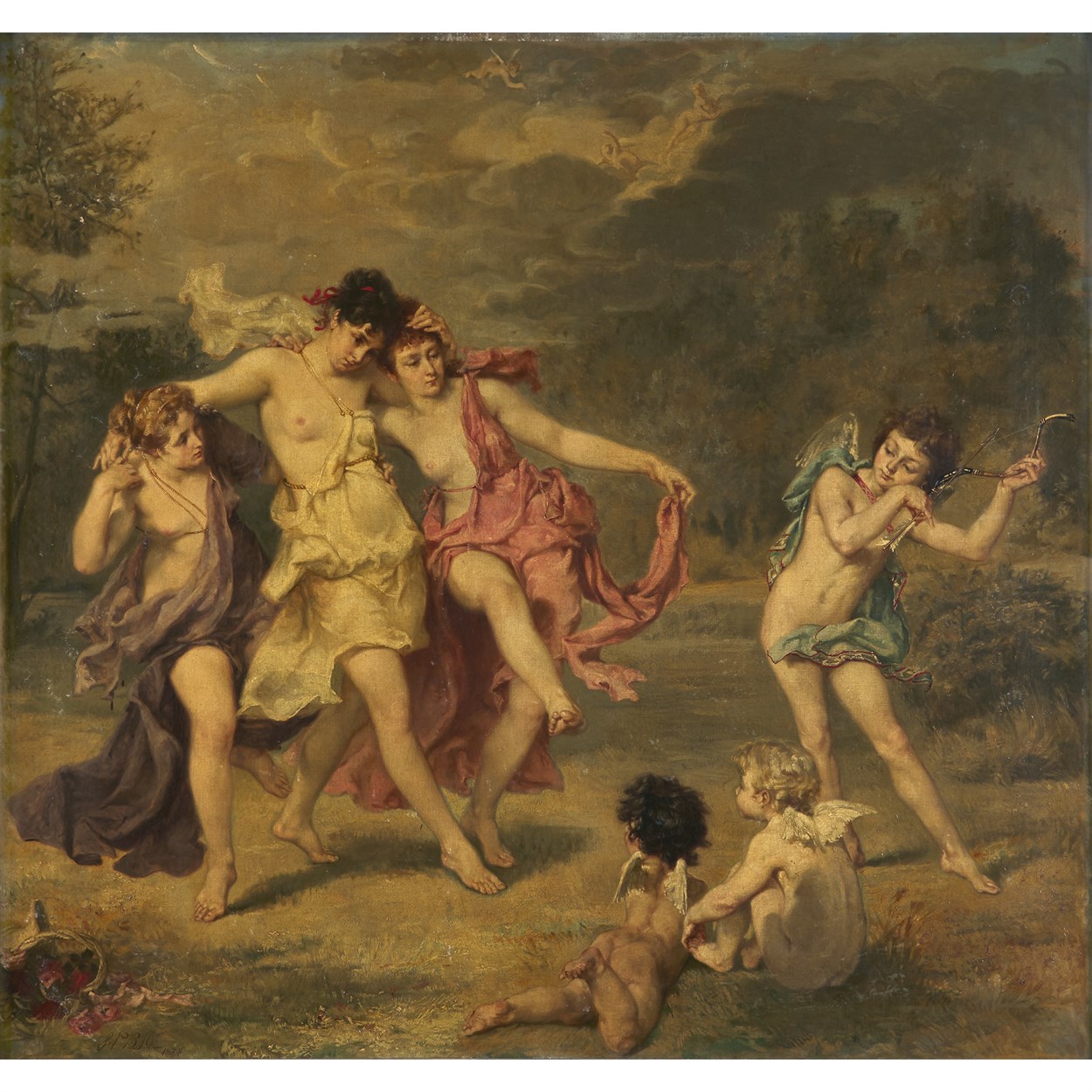
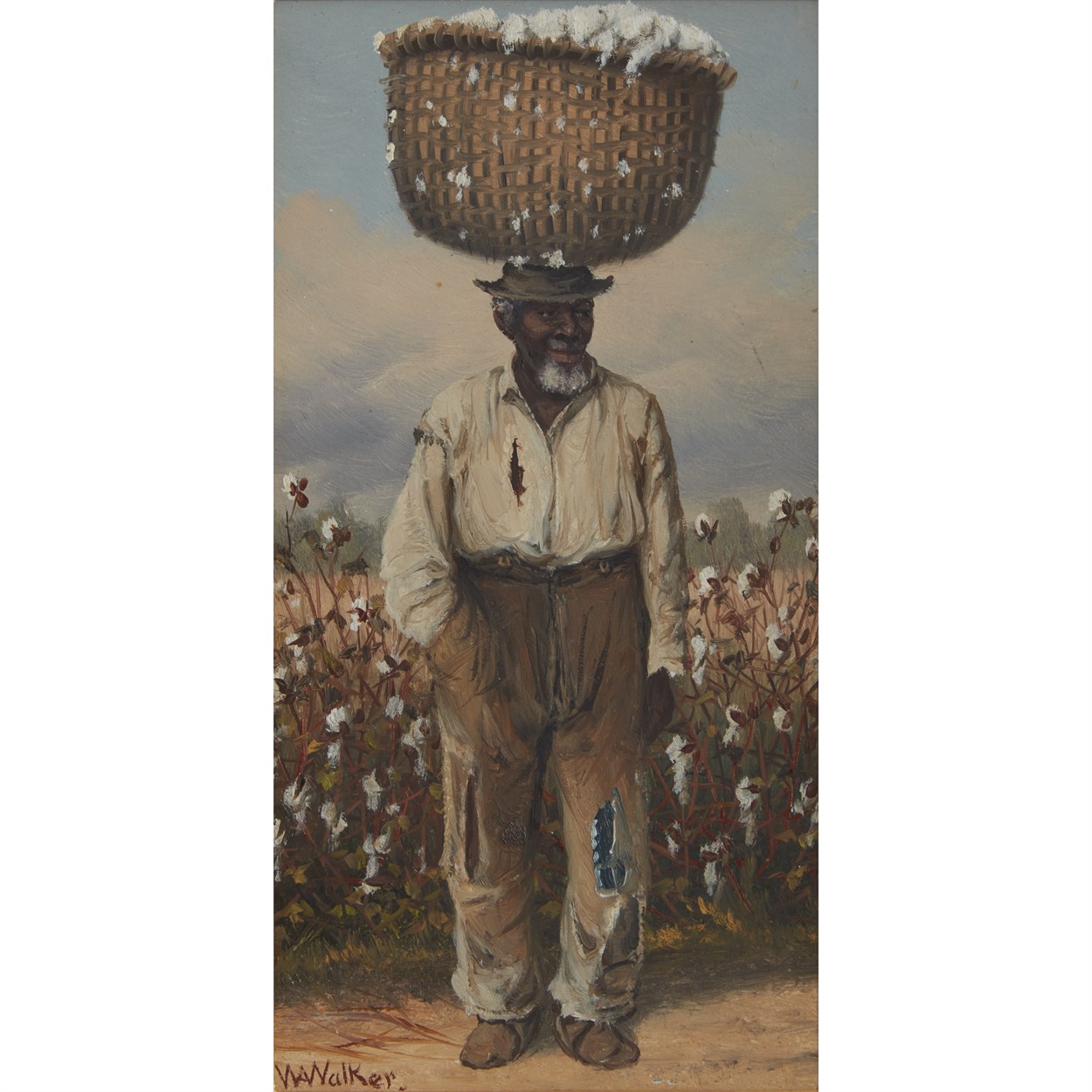

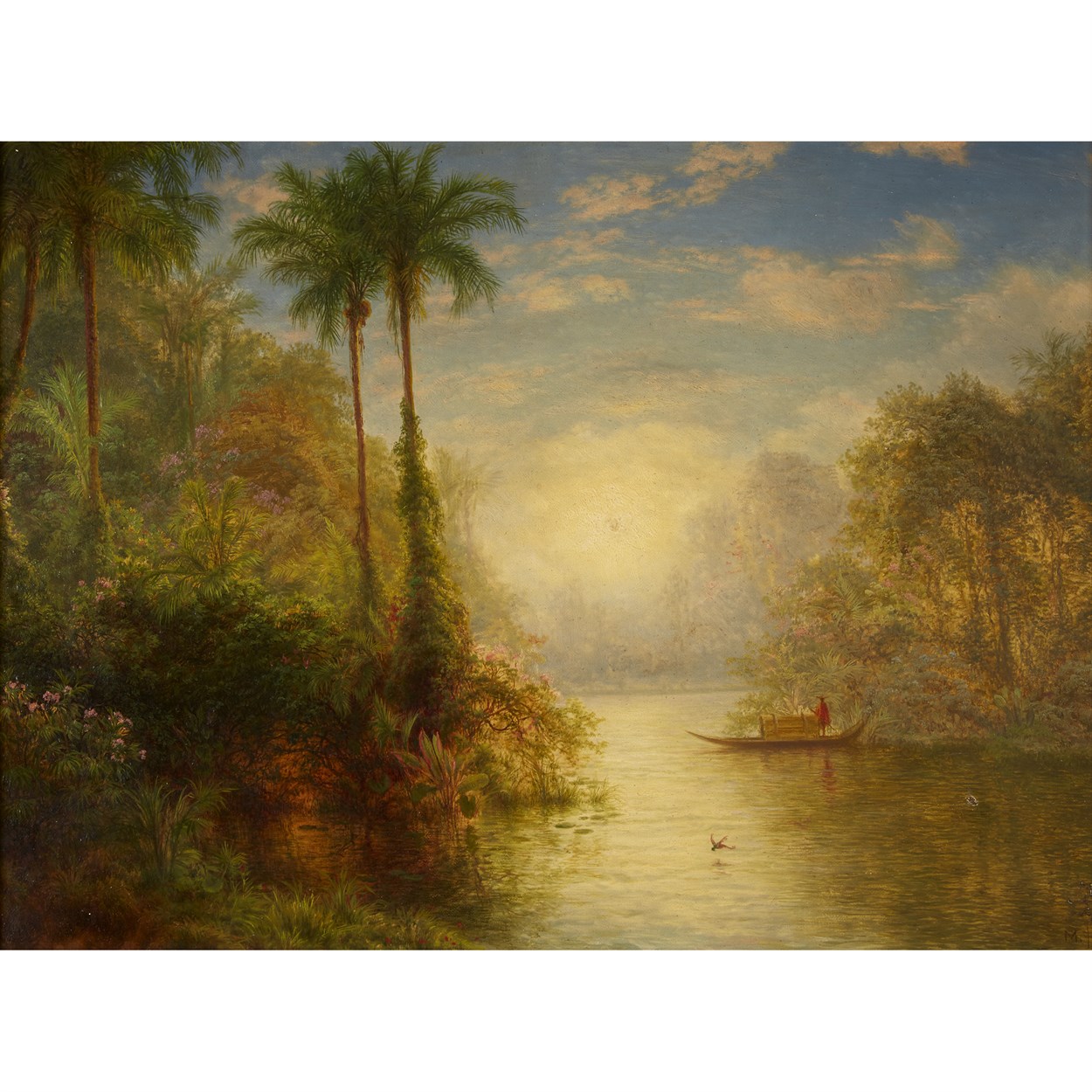
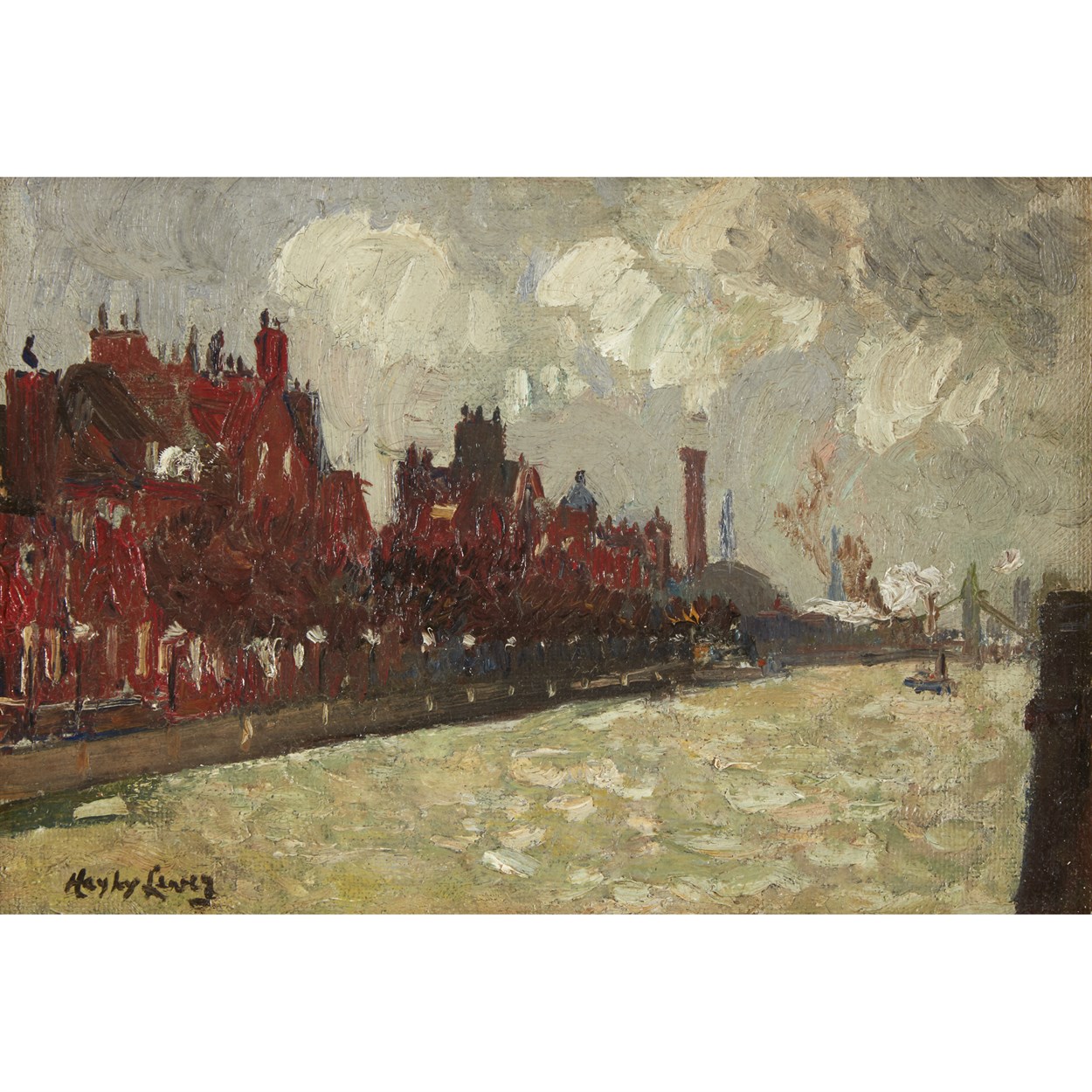
Try LotSearch and its premium features for 7 days - without any costs!
Be notified automatically about new items in upcoming auctions.
Create an alert